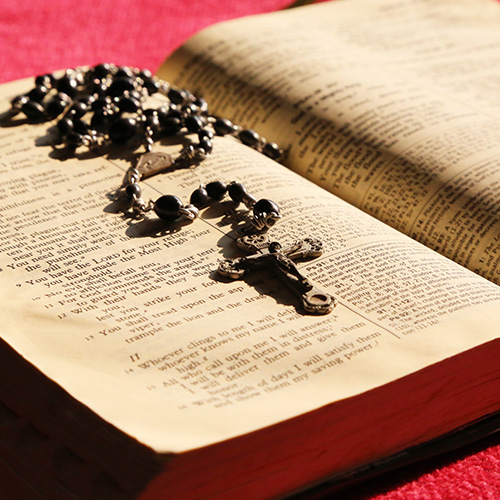The Bible – already the best-selling book of all time with more than 5 billion copies estimated sold – is seeing a huge increase in interest. The Wall Street Journal recently reported that Bible sales rose 22% in the U.S. through October 2024 compared with the same period last year, according to book tracker Circana BookScan. Among Catholics, some of that increase can be attributed to the popularity of Minnesota priest Father Mike Schmitz’s “Bible in a Year” podcast, the release of beautiful new editions from Ignatius Press and the prevalence of study editions that help readers better connect the dots between the Old and New Testaments. If reading more of the Bible was on your New Year’s resolution list, here is some advice on where to start and some ideas to make it easier.
 There are many versions of the Bible, but not all of them are approved by the Catholic Church. Since 1983, Church law has given the authority to approve translations of sacred Scriptures to the Apostolic See (the Church’s central government, led by the pope) and local bishops’ conferences. Prior to 1983, translations could be approved by the Apostolic See or by a local ordinary, usually a bishop or vicar general. The U.S. Conference of Catholic Bishops maintains a comprehensive list of translations that have been approved since 1983. These include well-known versions such as the New Revised Standard Version, Catholic Edition, as well as some you may not be as familiar with, such as The Grail Psalter (Inclusive Language Version).
There are many versions of the Bible, but not all of them are approved by the Catholic Church. Since 1983, Church law has given the authority to approve translations of sacred Scriptures to the Apostolic See (the Church’s central government, led by the pope) and local bishops’ conferences. Prior to 1983, translations could be approved by the Apostolic See or by a local ordinary, usually a bishop or vicar general. The U.S. Conference of Catholic Bishops maintains a comprehensive list of translations that have been approved since 1983. These include well-known versions such as the New Revised Standard Version, Catholic Edition, as well as some you may not be as familiar with, such as The Grail Psalter (Inclusive Language Version).

